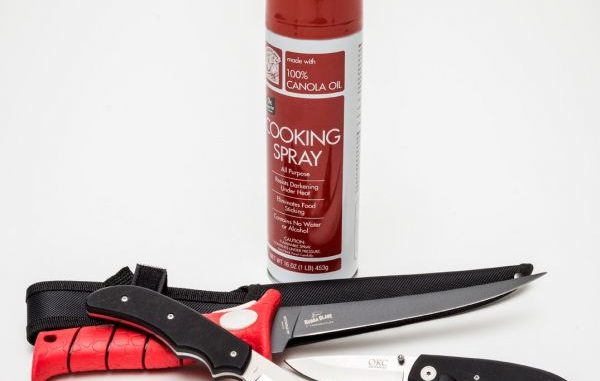
Pipes shares sharpening and care tips to make your new investment last
Choosing a new knife is like walking down the bass lure aisle at a sporting goods store — there are so many shapes, colors, sizes and options that it can be tough to make a decision.
But Gene Pipes, who works for Sam Houston Knives and represents Knives of Alaska, Knives Ranch and Anza Knives, said picking the right blade should be your first consideration.
“If you’ve got a high carbon steel knife, I guarantee you it’s going to rust unless you take care of it,” Pipes said. “And a stainless steel knife is very difficult to sharpen, and it’s even harder to keep sharp. So you need carbon in your steel to make it sharpenable, and to be able to hold an edge to begin with.
“So go on and get a mixture of stainless steel and high carbon, such as a 1075.”
It’s also important that the hardness of the blade is in the right range, he said.
“Hardened steel has the ability to hold an edge, but if it’s too hard it will be brittle,” he said. “Look for something between 56 and 60 on the Rockwell scale. That will hold an edge, but be soft enough to sharpen.”
Speaking of sharpening, Pipes said the ideal angle to sharpen your new blade at is 23 degrees.
“We’re not trained to eyeball a 23-degree angle, so whatever system you’re using, choose an angle and stay with it for both sides of the knife,” he said. “If you get any lower — 17 degrees is razor sharp — your knife won’t hold an edge as well as a 23-degree angle does.
“And the object of sharpening a knife efficiently is to create a perfect edge by removing as little steel as possible, so the knife will last a very, very long time.”
Keeping a new knife clean is also key for its longevity, he said.
“You can coat it with any type of oil, preferably something that is not petroleum based,” Pipes said. “I like Pam or vegetable oil or olive oil — anything that doesn’t have a tang to it so when you cut your meat or cut your fruit, you don’t leave a taste on your food.
“The main thing is to keep it clean and wipe it clean.”
And if your knife has a sheath, Pipes said it’s ok to store it there.
“If the sheath causes it to mildew, you need some leather treatment on your sheath, and any lanolin or leather treatment will prevent rust, anyway,” he said. “If it starts turning green on you in the sheath, you’ve got too much moisture in there.”


